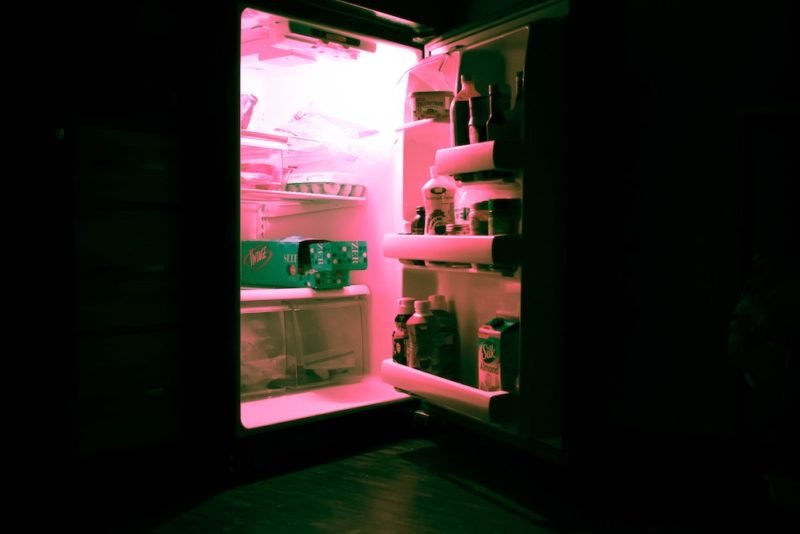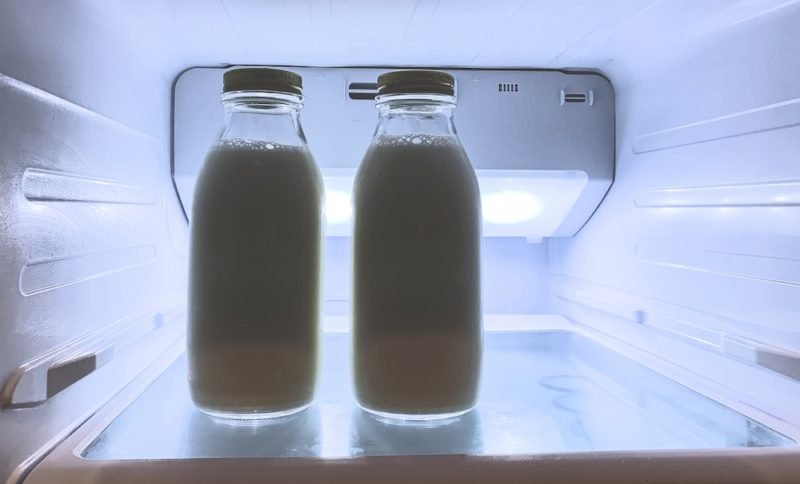
I’ll admit it—my refrigerator is a disaster. And not just because it randomly decides to freeze everything on our top and bottom shelves, even when room temperature hasn’t changed and we haven’t so much as breathed on the internal temperature control dial.
The other day, I looked inside and said (rather loudly), “What is going ON in here?” One thing that was going on is way too many condiments. And I think they are literally starting to reproduce—or maybe that second jar of pickles is because the fridge was too crowded to see the first jar.
The perils of kitchen chaos
Just as a disorganized, cluttered kitchen can discourage you from cooking, so can a disorganized, crowded fridge (duh). So do as I say, not as I’m currently doing in my rental apartment top-freezer fridge. (I dearly miss having a bottom freezer, French door fridge…but I will again, once my house is built.) There are good reasons to be more of a minimalist in the refrigerator-stocking department, namely:
- You forget about perfectly good leftovers until they are no longer good (read: they’ve become science experiments). Oddly, we have managed to mostly avoid this pitfall, although I said a tearful goodbye to some formerly lovely collard greens yesterday.
- If you have to move 14 things out of the way to get to the veggies and hummus, you’re likely to say, “forget about it” and just reach into the pantry for the box of crackers when you need a snack.

Where to start with refrigerator organization
I’ve read advice to leave a half-inch space between fridge items and to not stack anything, but I think that’s unrealistic for anyone who cooks at home most days of the week. I think the only time my fridge (even when I’ve had a larger fridge) has looked like that is in the last few days before a vacation, when we’re trying to use up our perishables. It is a lovely feeling, though, to look into your fridge and see space and surfaces, perhaps the next best thing to a spa day. (OK, perhaps not.)
What is important is being able to actually see what’s in your fridge, so one tip that I absolutely stand by is keeping a supply of stackable storage containers with secure lids. For me, that means:
- Assorted glass containers with plastic clamp-on lids (I buy mine at Costco when there’s a coupon for them
- Food-safe plastic containers from Cash & Carry or Costco business centers (if you live in Seattle, the Tukwila Costco also has them, because they carry a good amount of restaurant paraphernalia). These containers come in sizes from fridge-worthy to large enough to store one of those extra-large bags of dried beans (also from Costco). And they have cup measurements on the sides, which comes in handy at times.
You are what you eat, and you eat what you see
What I am somewhat militant about is not reusing old yogurt tubs and other opaque containers. We did this for years, and a lot of food went to waste because of it. I only use those containers (with lids off) for things like defrosting meat or poultry in the fridge (to avoid blood leaking all over). The advantages of seeing what you have?
- You’re more likely to cook.
- You’ll cut down on food waste.
- You’ll avoid buying more of what you already have
If you build it, you will eat it (hopefully)
Part of seeing what you have includes clearly seeing the foods you are trying to prioritize in your diet. That’s why it’s super helpful to store pre-prepped veggies and proteins up front where they all but sit up and say “Hi!” every time you open the fridge. This includes washed and ready-to-eat greens, chopped veggies for salads and quick sautéing, sliced veggies for snacking, leftover cooked grains and beans, hardboiled eggs, rotisserie chicken.
Of course, to be able to have those things up front, you need to do the advance prep. This could mean shopping on the weekend then doing some prep (washing, chopping, batch cooking) to get you through most of the week. Or, it could mean planning meals that create leftovers so you minimize how many nights you have to do full-on cooking. Think about what makes sense for you, if what you are doing now isn’t already working for you.
Oh yeah…and watch out for condiment creep. I tell ya, that ketchup and curry paste and soy sauce and jam and mustard will pile up before you know it if you aren’t careful!






